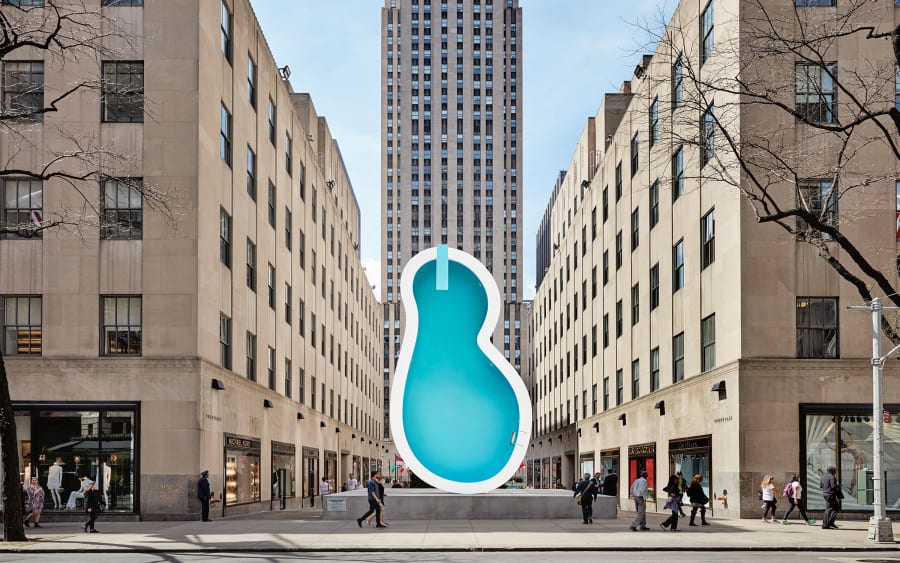When Lotus L. Kang was still a ‘baby artist’, as she puts it, she frequently called photo labs in her hometown of Toronto to inquire about any leftover materials they might have. ‘I was their little parasite,’ Kang admits, ‘taking whatever scraps I could get.’ One day, a lab called to offer her an unopened roll of photo paper they no longer needed. ‘I told them I’d be right over,’ recalls Kang, whose studio was a ten-minute walk away. Lifting the roll onto her shoulder, Kang immediately realized it was too heavy to be photo paper. The lab had mistakenly given her an industrial roll of photogram film.
This material, which has since become a recurring medium in her practice, features as part of In Cascades (2023), her installation at the 2024 Whitney Biennial, in which long sheets of the paper, striated with auburn hues, are weighted with cast-aluminum objects. Its tissue-like quality – the artist refers to the sheets as ‘skins’ – captures the deep resonances of her work, which reflects on the permeability of the human body, memory, and identity. ‘The skins have a seductive openness,’ says Kang, ‘an evocative quality that lingers with visitors, leaving a kind of residue.’ The material’s ability to continually change and react to light makes it inherently volatile, a quality that appeals to the artist, who sees in its transitory nature a reflection of her interest in the permeability of physical boundaries and constructions of nationhood.
Now based in Brooklyn, Kang often draws inspiration from her Korean heritage, frequently incorporating oblique biographical references into her work. In the series Receiver Transmitter (2023), for instance, Kang inserted photographs documenting an ancestral ritual she enacted on her birthday, depicting her own 38-year-old body within the folds of Japanese tatami mats, reflecting on Korea’s complex history with Japan and her grandmother’s experience of crossing the 38th parallel from North Korea into South Korea at the age of 38. ‘I’ve never felt fully Korean,’ Kang says, ‘and I’ve never felt fully Canadian. I feel hybrid, without a sense of belonging to either.’
For Berlin Art Week next month, Kang has created a new photogram installation for the Julia Stoschek Foundation as part of the group show ‘After Images’. There, the piece will be shown in a spatial dialogue with other artworks. ‘We’ll see how that feels,’ says Kang, who admits to never fully understanding her work until long after it’s made. ‘It’s always an intuitive process: In hindsight, I’ll understand. But I’m intrigued to see how people respond to it.’
Lotus L. Kang is represented by Franz Kaka (Toronto) and Commonwealth and Council (Los Angeles, Mexico City).
The Whitney Biennial is on view through August 11.
Duncan Ballantyne-Way is a writer, editor, and art critic based in Berlin.
Caption for top image: Portrait of Lotus L. Kang. Courtesy of the artist.
Published on August 9, 2024.


